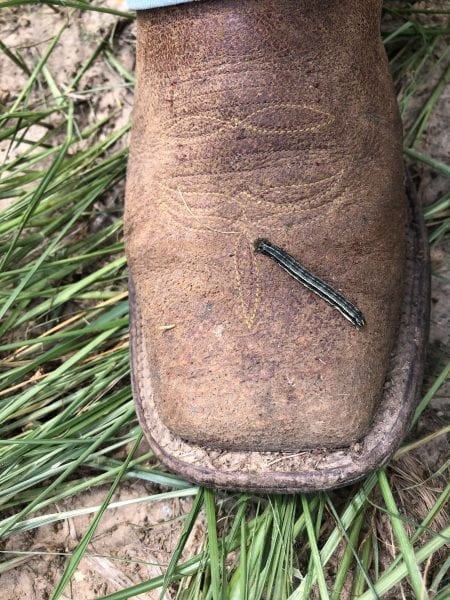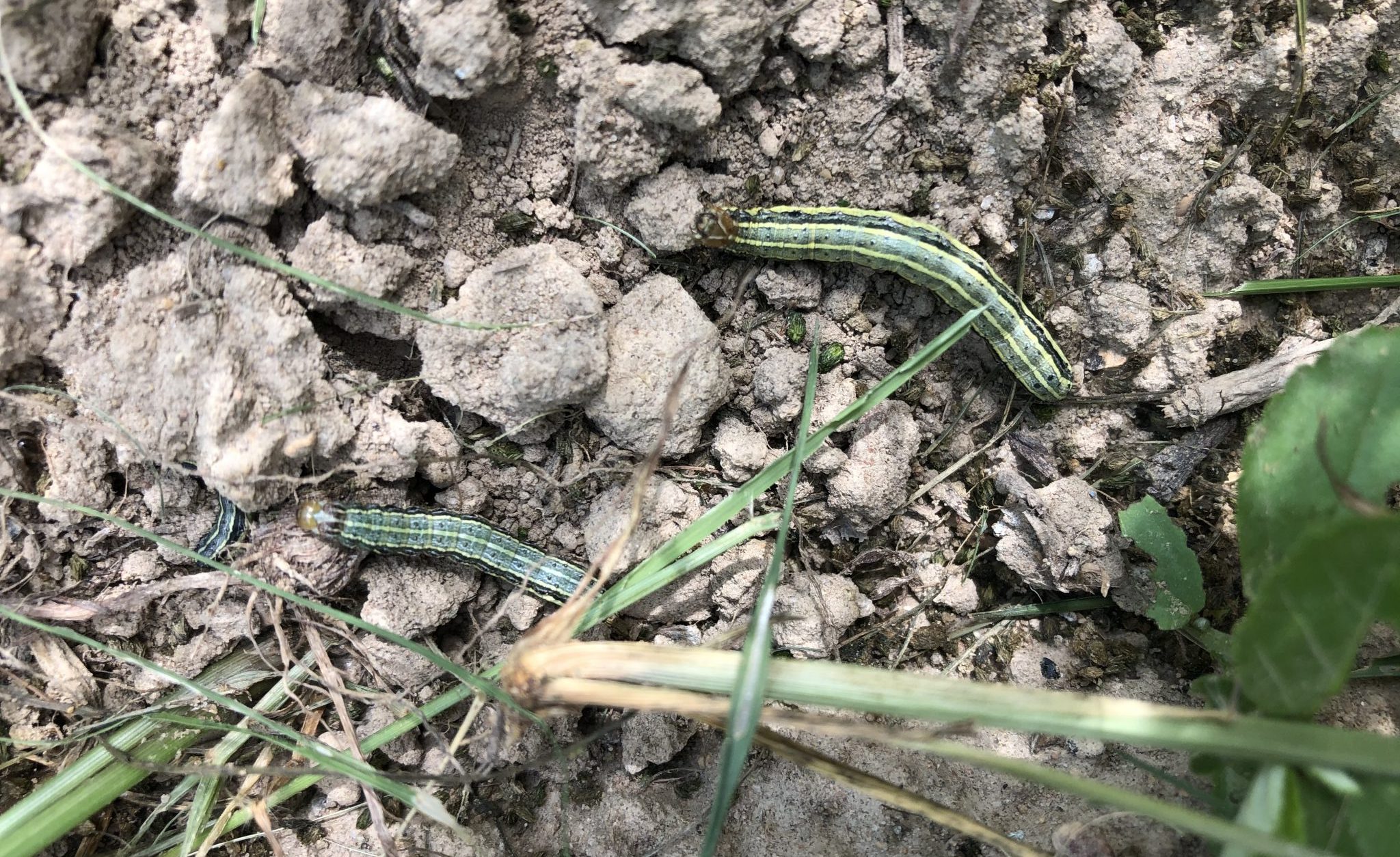Farming

 If a producer discovers that they have a fall armyworm infestation, insecticides may be used to control it. The stage of growth (size) of the armyworms will aid in determining which insecticide will provide the most effective control. There are two types of insecticides that are recommended for fall armyworm control: insect growth regulator (IGR) and pyrethroid insecticides.
If a producer discovers that they have a fall armyworm infestation, insecticides may be used to control it. The stage of growth (size) of the armyworms will aid in determining which insecticide will provide the most effective control. There are two types of insecticides that are recommended for fall armyworm control: insect growth regulator (IGR) and pyrethroid insecticides.
- IGR insecticides inhibit the pest’s growth cycle and typically work well to control small armyworms.
- Pyrethroid insecticides kill quickly upon contact and provide control of small and medium-sized armyworms. Note that pyrethroid products are classified as restricted use pesticides and require a pesticide applicator license.
There are some instances where tank-mixing two products would be helpful in securing immediate control and provide some residual control. For example, if a field needs to be sprayed but the producer does not plan to harvest they hay for another 10 to 14 days, mixing an IGR insecticide with a pyrethroid insecticide is beneficial. The pyrethroid insecticide will provide fast control of armyworms and the IGR will provide residual that will be effective on small, newly hatched armyworms.
Insecticides Not Requiring a Pesticide License
The following are IGR insecticides listed by their active ingredient with their trade name in parenthesis. These work best on small armyworms but tend to be more expensive when compared to pyrethroid insecticides.
- carbaryl (Sevin XLR Plus)
- chlorantraniliprole (Prevathon)
- methoxyfenozide (Intrepid 2F)
- spinosad (Blackhawk, Entrust)
Note: Many of the insecticides used for control have grazing and hay cutting restrictions. Producers should always read and follow the directions and regulations described on the insecticide label and ensure that the product is intended for use in pastures and hayfields.
Insecticides Requiring a Pesticide License
The following are pyrethroid insecticides listed by their active ingredient with their trade name in parenthesis:
- beta-cyfulthrin (Baythroid XL)
- cyfulthrin (Tombstone)
- gamma-cyhalothrin (Declare)
- lambda cyhalothrin (Warrior II)
- zeta-cypermethrin (Mustang Maxx)
More Information
For an in-depth discussion of fall armyworm identification and control, read the Alabama Extension publication Management of Fall Armyworm in Pastures and Hayfields, ANR-1019.
Trade and brand names used in this publication are given for information purposes only. No guarantee, endorsement, or discrimination among comparable products is intended or implied by the Alabama Cooperative Extension System.

